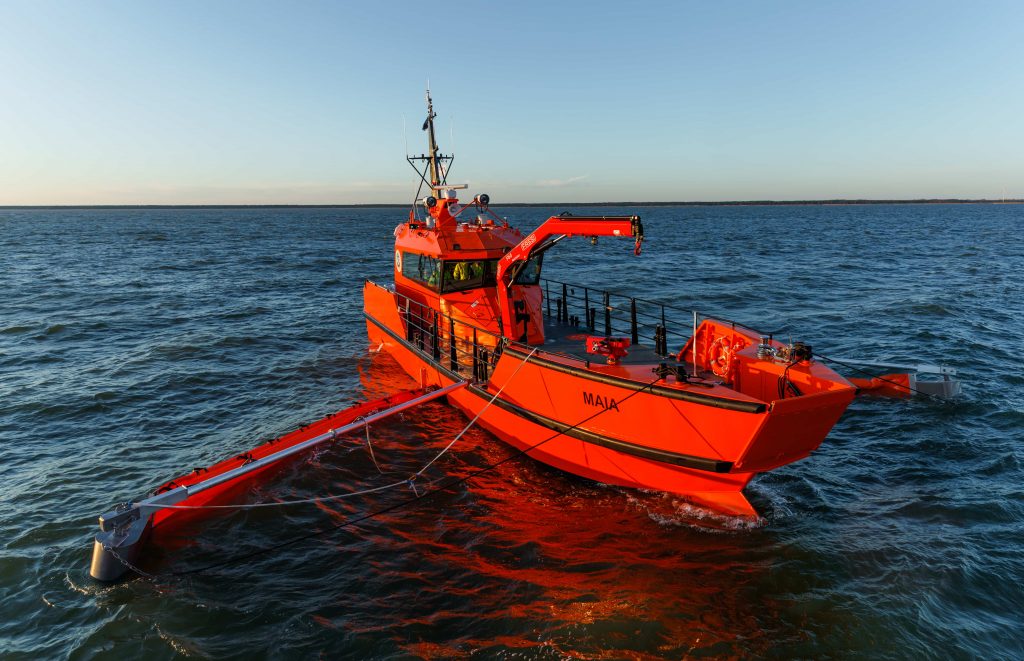Interesting New Projects Designed with Maxsurf. Some integrating fuel economy, reduced resistance, ride comfort and autonomous operation. Please click here to contact us for further details about Maxsurf.

Holland Shipyards has converted an inland vessel into a trailing suction hopper dredger (TSHD) now named Taruma. Starting with a standard inland vessel, the shipyard engineered and installed advanced dredging equipment, such as a complete drag arm system, jet monitors, and a complete jet pump and dredge pump system.
The complete conversion of the vessel included significant structural modifications. Holland Shipyards ensured that the TSHD Taruma met all operational requirements and exceeded expectations during its trials.
The result is a 1300 m3 hopper dredger, capable of pumping 2500 m3/h (mixed) with a dredging depth ranging from 8 to 17 metres. With versatile discharging options, including a shore connection, rainbow nozzle and bottom doors, the Taruma is ready to tackle the most demanding dredging tasks.
The 102.6-metre Feadship superyacht Ulysses has been spotted on her sea trials following her recent launch.
Designed inside and out by Sinot Yacht Architecture & Design with naval architecture by Azure Yacht Design, the clean-cut exterior lines and vertical bow lend Project 1011 a distinctive profile and purposeful personality. The yacht also has 1,100 square metres of exterior glass that includes twenty exterior sliding doors and twelve glass windbreaks. There are four outdoor hot tubs, a swimming pool covering the full height of the main deck and accessed from the pool deck; a helicopter hangar under the forward helipad and no fewer than eight hull doors (one of which is the largest tender garage door ever installed on a Feadship).
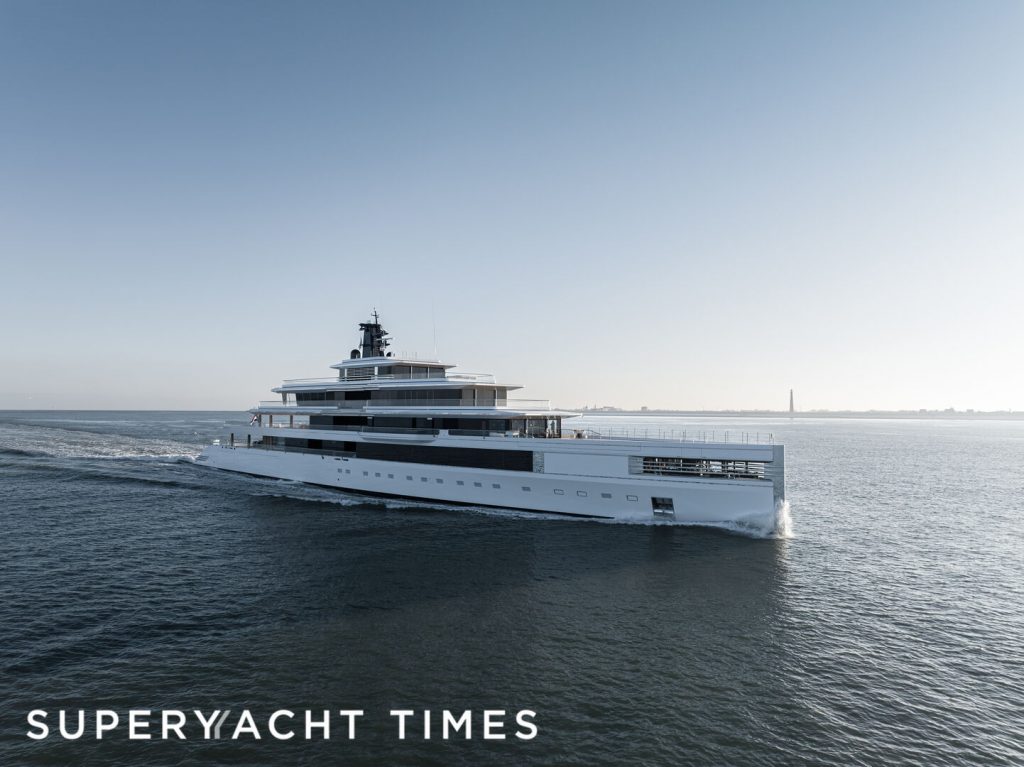
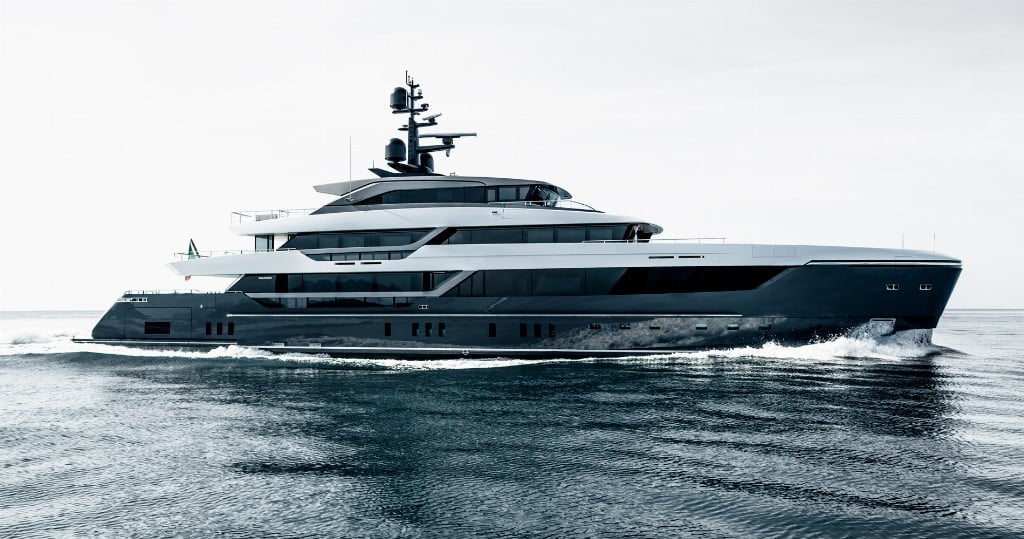
Virtuosity, the second unit in the 57Steel line by Sanlorenzo, provides bold character with clean elegant lines.
Virtuosity, a 56.70-metre superyacht with a tonnage of 1021 GT, was conceived as an ambitious project to combine technological development, passion and design vision.
The result bears the signature of Studio Zuccon International Project for the exterior design and Piero Lissoni for the interiors, assisted by the Sanlorenzo SY Style Centre.
Australian high speed craft specialist Incat Tasmania has handed over its latest building project, the 76 metre high speed passenger catamaran El Dorado Express
Designed by Revolution Design the El Dorado Express is a truly fast vessel, reaching an impressive speed of 50.2 knots on sea trials with 100 tonnes deadweight.
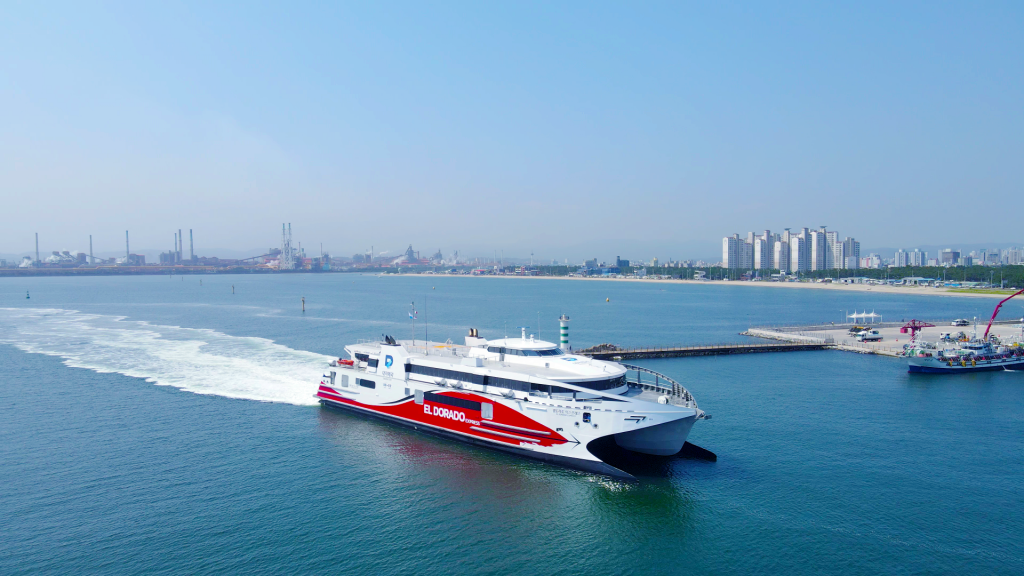
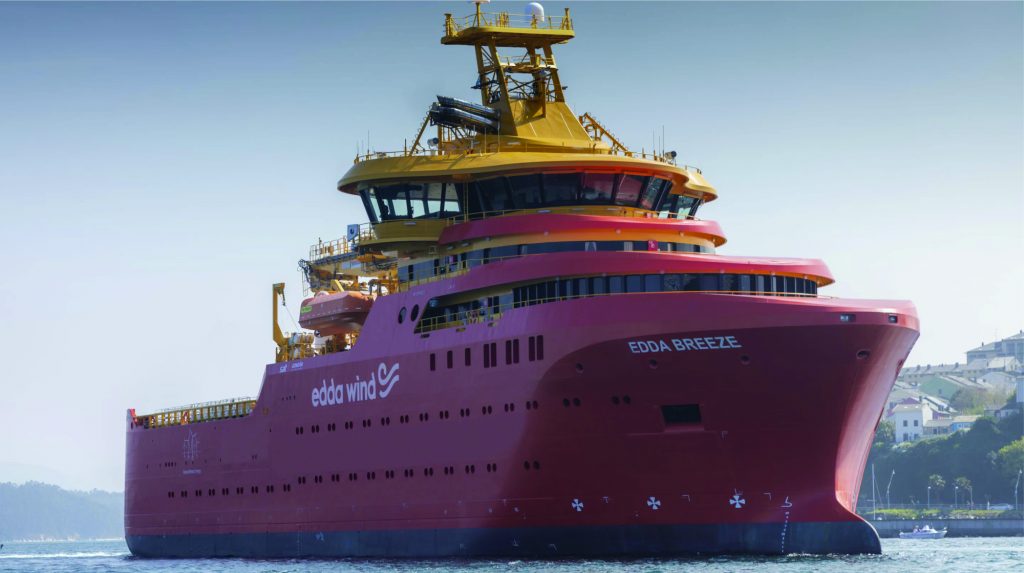
Following the Naming Ceremony for Edda Nordri last Saturday, Edda Wind today launched Commissioning Service Operation vessel (CSOV) C492 at Gondan Shipbuilders in Spain. Edda Nordri will commence operation in Q4 2023 and C492 will be completed in Q2 2024.
The newbuild is a purpose-built CSOV prepared for emission-free operations with a hydrogen-based propulsion system based on the Liquid Organic Hydrogen Carrier (LOHC) concept. The vessel will serve as mother vessel for wind turbine technicians as they perform commissioning and maintenance work on offshore wind turbines. The CSOV is 88.3 in length and can accommodate 120 persons in total . All units have high standard cabins and common areas.
Blue Jeans winner WSA 2023
“A very pleasant all-rounder that certainly met the owner’s challenge,” was how the judges of this year’s World Superyacht Awards described Blue Jeans. Despite being up against four other superb nominations in the ‘Semi-displacement or planing motoryacht 30 to 34.99m’ category, Van der Valk’s fully custom entry won by a significant margin in a secret ballot of the independent panel of 23 current and former superyacht owners.
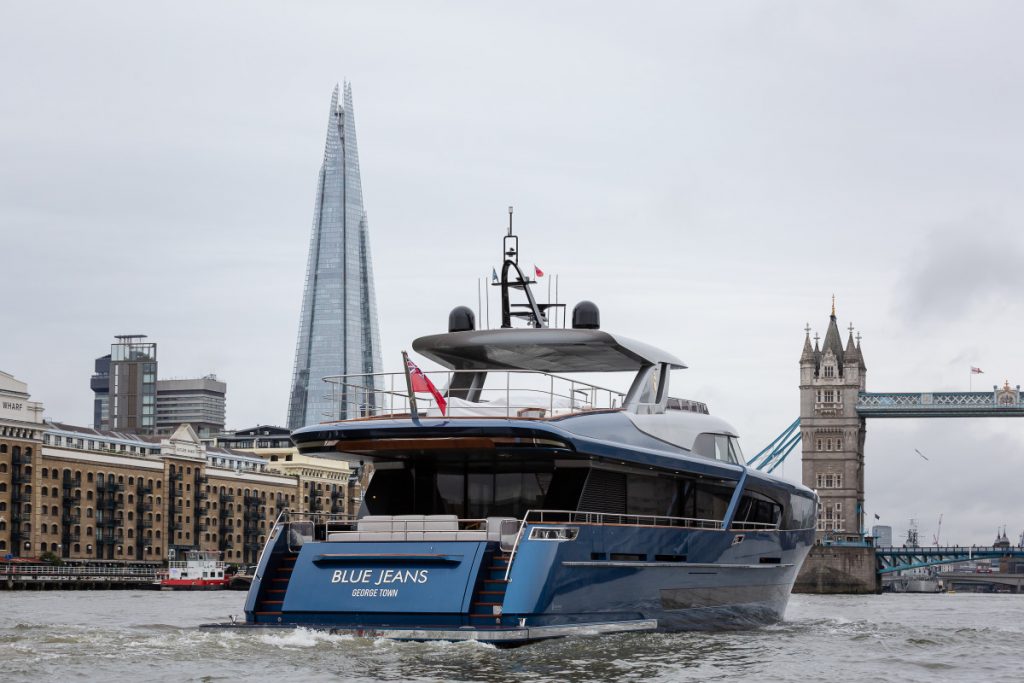
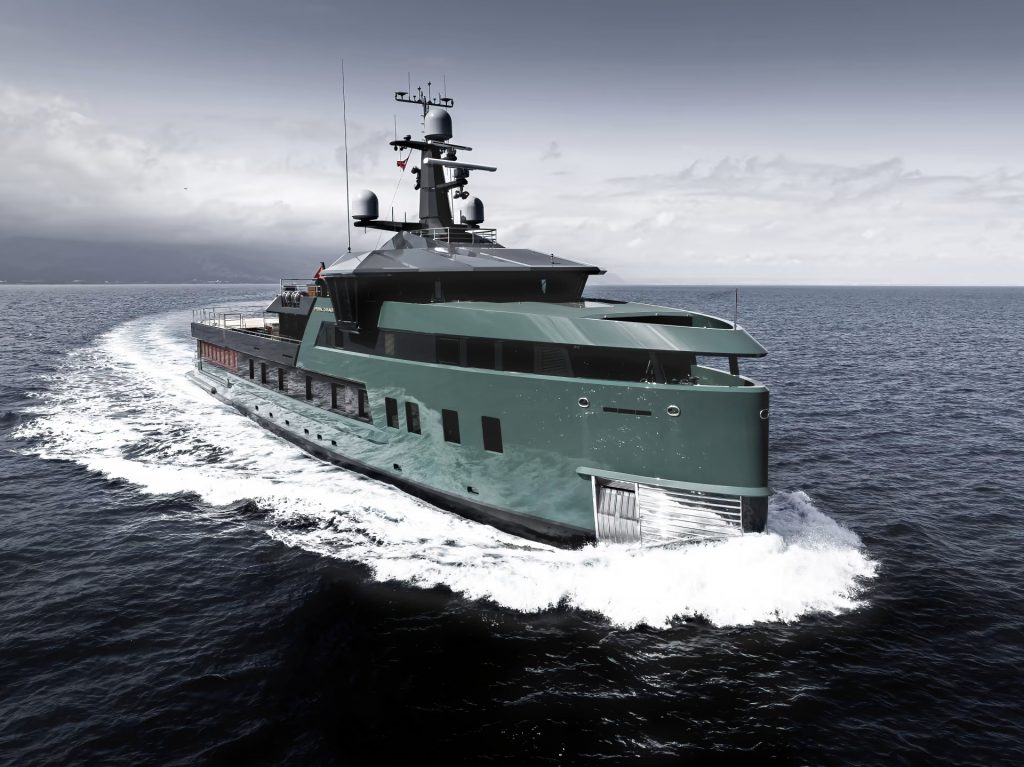
PINK SHADOW is a 58.0 m Motor Yacht, built in Turkey by Damen Yachting and delivered in 2023. She is the only SeaXplorer 58 model.
Her top speed is 14.5 kn and she boasts a maximum range of 5000.0 nm when navigating at cruising speed. She can accommodate up to 12 guests in 6 staterooms, with 18 crew members. She has a gross tonnage of 1090.0 GT and a 11.0 m beam.
She was designed by Azure Yacht Design and Naval Architecture.
The naval architecture was developed by Damen Yachting.
58th pilot boat delivered by Safehaven.
Powered by a pair of Volvo D13 500hp engines she has an operational speed of 24.5kts carrying 7 pilots and crew, is self-righting for crew and pilot safety, and as such capable of operating of in all weather conditions.
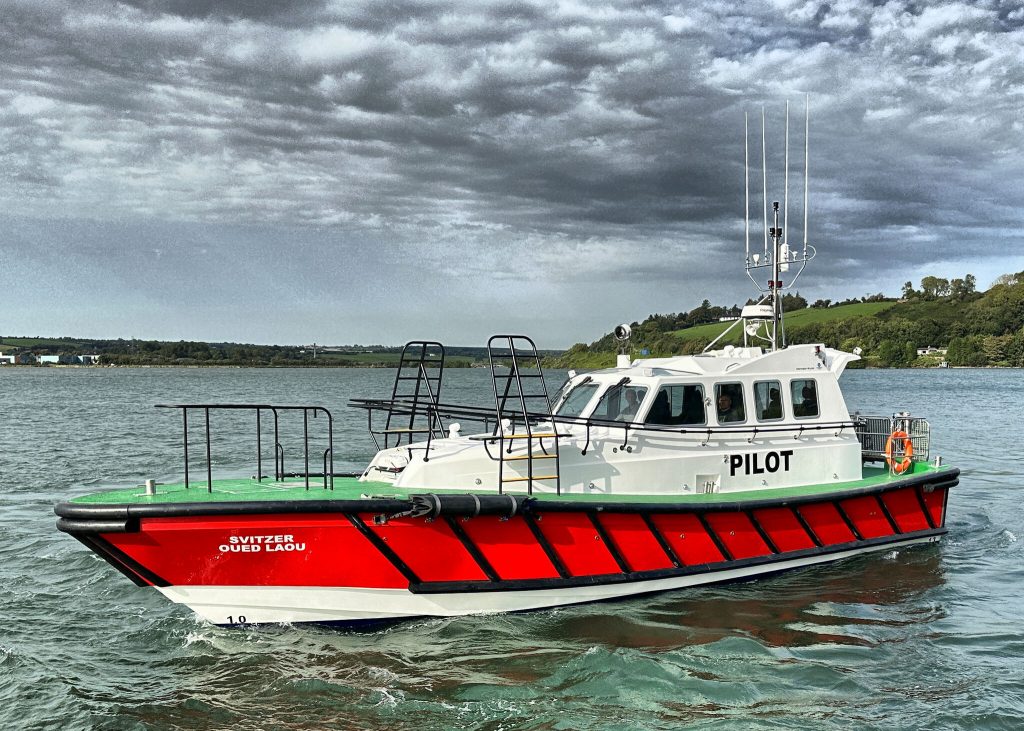
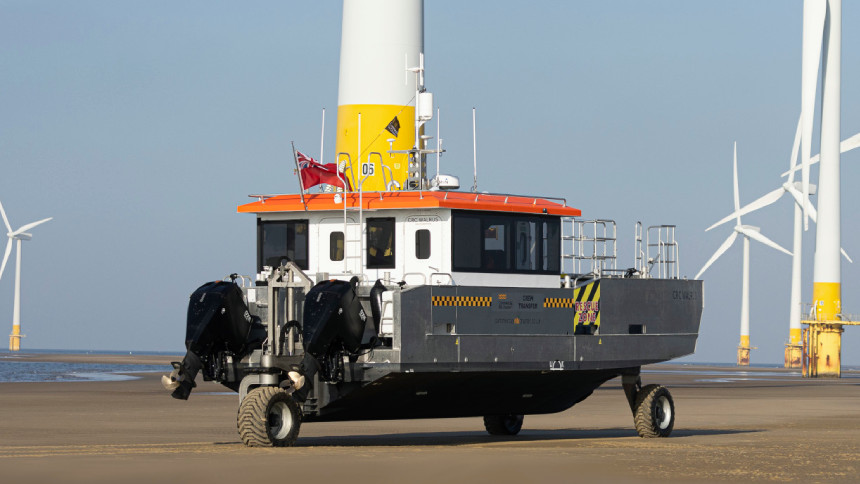
UK boatbuilder Diverse Marine recently delivered a new windfarm crewboat with amphibious capability to safely transfer technicians and cargo to offshore wind turbines in shallow and drying areas.
CRC Walrus will be operated by Commercial RIB Charter (CRC) at the Scroby Sands wind farm in the UK North Sea under a charter contract with German energy company RWE. The vessel was designed in cooperation with naval architecture firm Chartwell Marine to combine the safety and comfort of a standard crewboat with the capabilities of amphibious open rigid inflatable boats (RIBs) currently available.
The 12- by four-metre crewboat features many of the elements typically found in CRC’s fleet of catamarans and cabin RIBs such as MCA Category II coding, push-on bow fendering, suspension seating..
Lady Fleur, X-treme 105, has an overall lenght of 32,65 m and features the latest technical developments such as a wet launch system. On the exterior, the yacht has a dining area on the aft which is adjoined by an integrated swimming pool with a changeable depth. When drained, the deck can be lowered to allow the tender to be stored. Meanwhile, the garage amidships opens up on either side of the yacht and has plenty of storage for a range of water toys including two Jet Skis and a RIB of up to 3.45 metres.
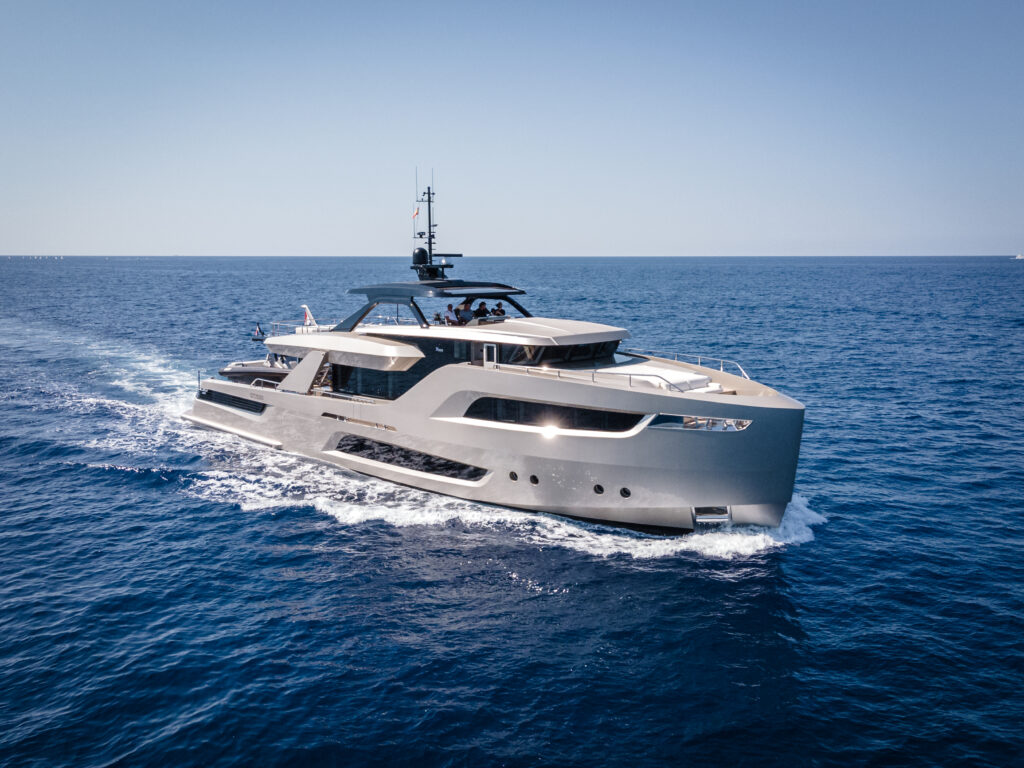
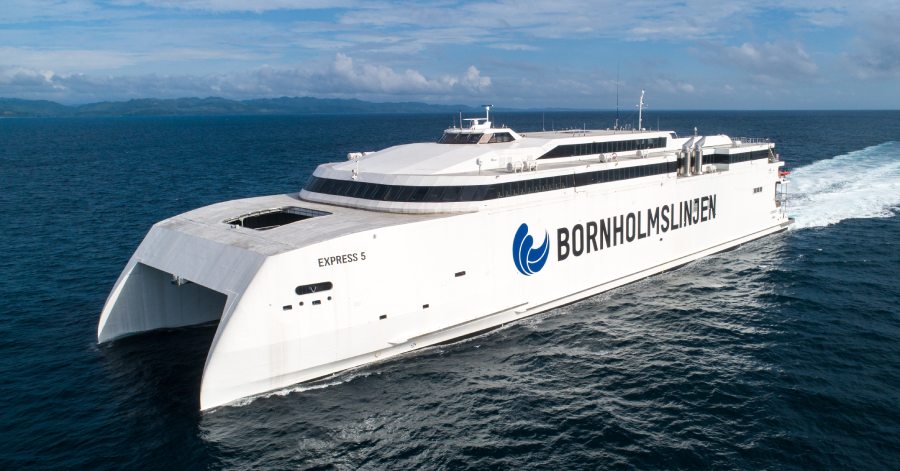
Austal Philippines has successfully launched the 115-metre, high speed vehicle-passenger ferry Express 5, for Molslinjen of Denmark.
Express 5 has the capacity for 1,610 passengers, space for 450 cars (or 617 lane metres for trucks plus 257 cars) over 2 vehicle decks and an operating service speed of 37 knots. It is powered by an LNG-capable, medium-speed power plant that offers a powerful yet economic and environmentally friendly solution. On board, passengers will enjoy leather appointed reclining seats with USB ports, Wi-Fi, a full bistro and bar(s), a children’s play area and multiple audio-visual screens.
Singapore-shipbuilder Glow Marine has delivered a new fast catamaran ferry to operate on inter-island routes within Taiwan.
Designed by Dutch naval architects CoCo Yachts, Kai Shiuan 8 measures 42 by 10 metres and has capacity for 388 passengers including wheelchair-bound travellers.
Four MTU 12V2000M86 diesel engines drive a quartet of Kongsberg KaMeWa 56-4 waterjets via ZF gearboxes propel the ferry to speeds in excess of 38 knots.
Kai Shiuan 8 was designed and built to the requirements of Bureau Veritas and Taiwan’s CR Classification Society. The vessel also complies with the IMO International Code of Safety for High Speed Craft (HSC Code).
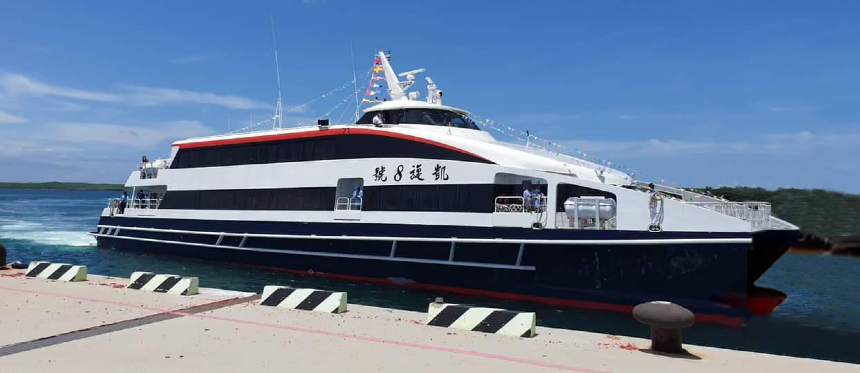

Estonian builder Baltic Workboats has delivered the second in a series of 30-metre hybrid electric Ro-Pax ferries ordered from the company by Germany’s Federal Waterways and Shipping Administration (Wasser- und Schifffahrtsverwaltung des Bundes; WSV).
The 30-metre-long Alster has capacity for 10 cars or 45 tonnes of cargo. It is equipped with Voith Schneider propellers, Corvus Energy batteries, and a Stemmann fully automatic shore charging system, while Siemens integrated all onboard electrical connections.
Although designed with hybrid propulsion, the ferry is capable of fully electric operation.
Alster‘s sister Arlau was handed over in July of this year. The third ferry in the series is scheduled for delivery in October.
The three new ferries will replace some of the vessels that have been in operation on the Kiel Canal for nearly 70 years.
Associated British Ports (ABP) recently took delivery of the first of nine pilot boats ordered from Goodchild Marine Services of Norfolk. The nine boats, which all utilise a design developed by French naval architects Pantocarene, are to be delivered to ABP over the next five years under a £9 million (US$11.8 million) contract awarded in late 2020.
The boat has an LOA of 17.63 metres, a beam of 5.36 metres, a draught of 1.46 metres, and a lightship displacement of approximately 22 tonnes.
The planing hull, which was built with emphasis on both strength and light weight, also boasts an innovative “beak bow” wave-piercing design that guarantees improved fuel efficiency as well as smoother navigation when sailing at high speeds in bad weather or when manoeuvring alongside and separating from ships to ensure safe pilot transfers. The bow design promises fuel consumption of 140 litres per hour when cruising at 25 knots while a total fuel capacity of approximately 2,500 litres will mean the boat can easily keep up with the demands of ABP’s daily operations in the busy Humber region.
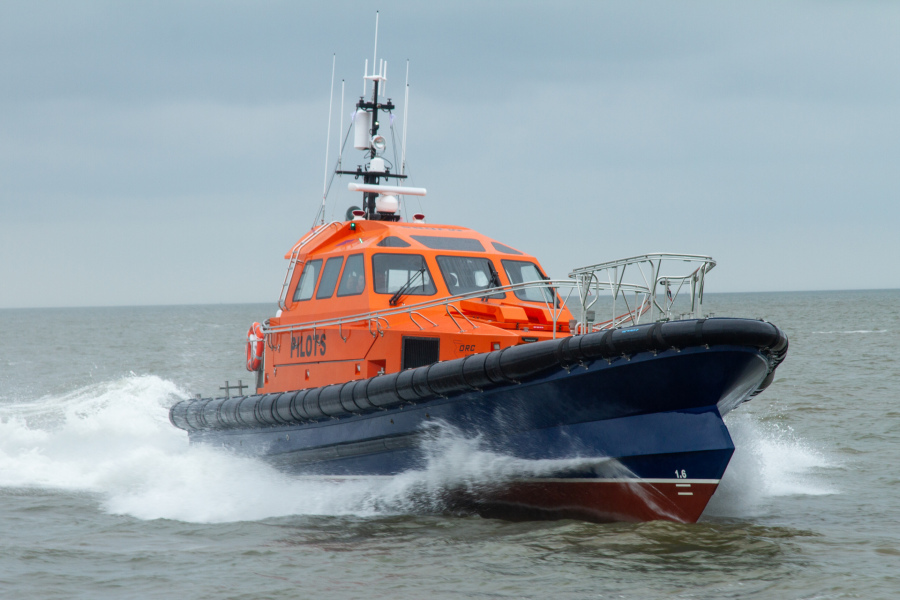

The Department of Environment and Science (DES) of Queensland, Australia, recently took delivery of a new patrol vessel for use in the waters of the Great Barrier Reef.
Designed by Incat Crowther and built by Norman R. Wright and Sons of Murarrie, Reef Resilience will service the southern region of the reef from its homeport in Gladstone. Its duties will include compliance monitoring, marine park and island national park management, diving support, and research operations.
Incat Crowther said the vessel will also be able to operate in remote offshore waters within the Australian exclusive economic zone (EEZ) for extended periods of up to three months.
French Polynesia-based The Degage Group has awarded Austal a €20.5 million (US$24 million) contract for the design and construction of a new high-speed catamaran ferry.
Work will commence on the new ferry in August 2021 at Austal Vietnam. Delivery is scheduled for the first half of 2023.
The vessel will have an LOA of 66.4 metres, a beam of 15.2 metres, a draught of 1.8 metres, and capacity for 574 passengers. Crew accommodation will include seven two-berth cabins and two single-berth cabins.
The ferry will also have space for up to 16 tonnes of cargo with loading and unloading to be accomplished via two cranes.
Four diesel engines driving waterjets will propel the vessel to a maximum speed of 35.8 knots or a range of 360 nautical miles.
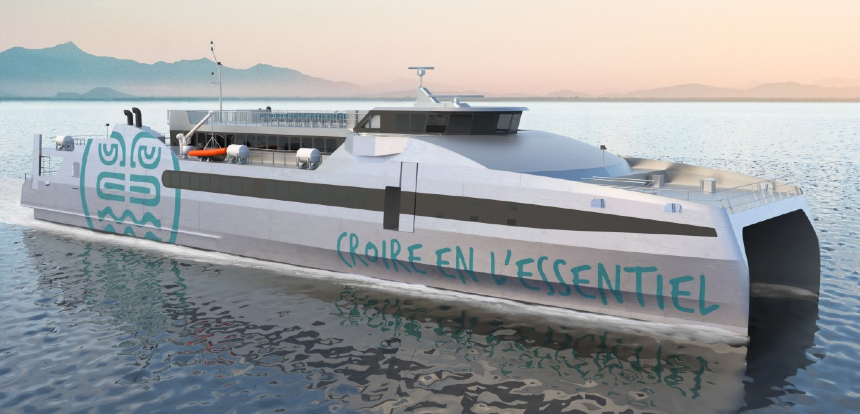
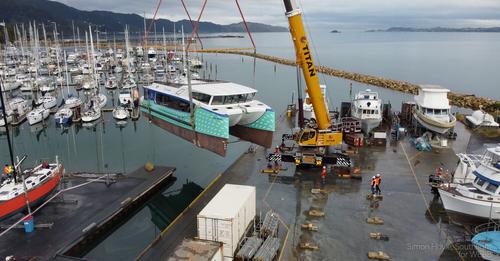
The Southern Hemisphere’s first electric passenger ferry is finally in the water, soon to undergo sea trials before the anticipated official launch date in September 2021.
The New Zealand-developed vessel is the first fully electric high performance passenger ferry in the Southern Hemisphere, built by Wellington Electric Boat Building Company (WEBBCo) for local ferry company, East By West.
The carbon-fibre 19 metre, 135 pax ferry will be providing a round trip service in Te Whanganui-a-Tara (Wellington Harbour). Powered by partners Meridian Energy, the vessel will transport passengers from Wellington CBD to Days Bay and Matiu/Somes Island.,
SSC Marine, provided the naval architecture and design coordination. They ensured all areas of performance were considered in the hull design and regulation compliance.
US-based technology company Saildrone has developed a new 72-foot (22-metre), 14-ton (12.7-tonne) unmanned surface vehicle (USV) powered by wind and solar energy.
Saildrone Surveyor is the first in a new series of large USVs that are designed to be capable of missions of up to 12 months in duration in the open ocean, even under adverse weather conditions. Development of the craft was driven by the need to acquire a survey capability similar to that provided by traditionally manned vessels but at a fraction of the cost and with a significantly smaller carbon footprint.
With a hull made from stainless steel and carbon-fibre composite, Saildrone Surveyor carries sonar equipment capable of seafloor mapping down to 7,000 metres as well as various other acoustic instruments that may also be utilised for shallow-water ocean mapping.
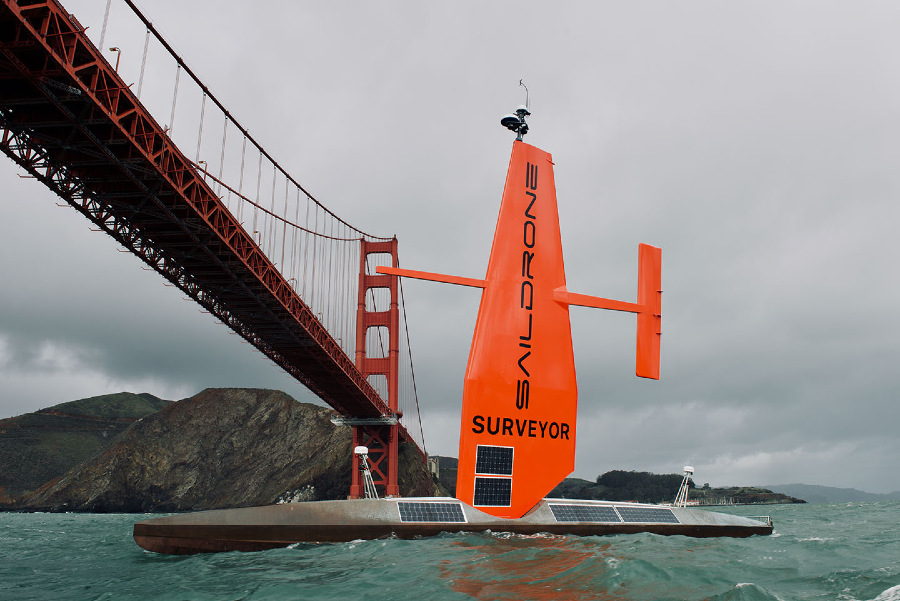
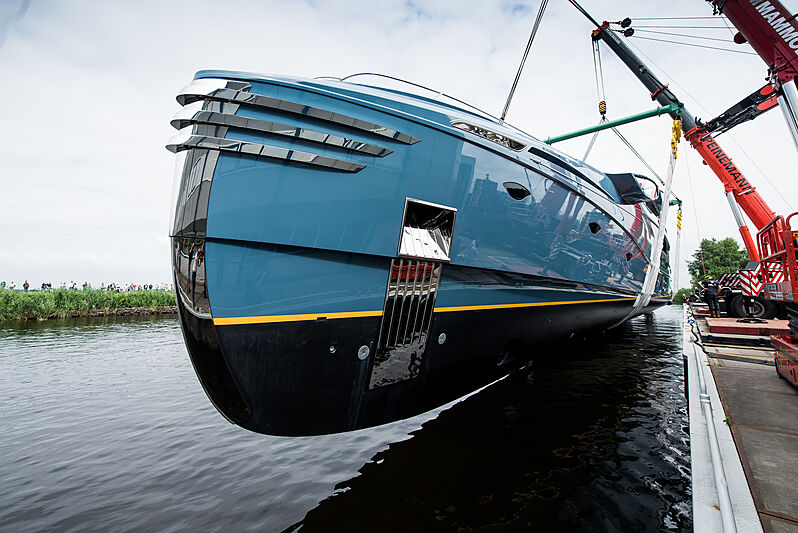
Launched July 2020.
Project Phi was first announced in the summer of 2018 and, with design engineering well advanced, construction of the aluminium hull began at Royal Huisman’s Vollenhove yard in mid-February 2019.
Among a long list of exceptional features of this project are the fuel-efficient hull lines based on the patented Fast-Displacement XL® concept by Van Oossanen Naval Architects, who are responsible to maximise the yacht’s length of over 55m / 180ft while remaining within the sub-500GT category. Phi is optimised for a maximum speed of 22 knots in combination with high fuel efficiency at cruising speed, and will be gyro-stabilised for added comfort.
FIRST AIRING
At the 4th of October 2019, the narrow and fuel-efficient hull of Project Phi was rolled out of her construction hall for the scheduled turning.
Phi is scheduled for delivery in 2021 and once launched will be supported by a matching 36m / 118ft shadow vessel built by Alia Yachts (also naval architecture by Van Oossanen and designed by Cor D. Rover).
ARIEL project. Updated March 2021
Drones are convenient to use for a quick survey of a large area, but their relatively low speed and flight time lead to a shorter range. This is why the drones can only be used near a place where they can be deployed and recharged.
TideWise and STABLE have announced successful testing of their ARIEL project, which saw a drone autonomously take off from the USV Tupan. The vessel can be used as a base for landing and recharging the drone. Developed over the past two years, TideWise managed the project from concept to prototype demonstration.
The ARIEL project, which was developed in partnership with Repsol Sinopec Brasil, GSCAR – COPPE/UFRJ, and Farol, consisted in the integration of a drone (UAV) and an unmanned surface vehicle (USV) to efficiently detect and identify oil spills without the need for any human operators. Equipped with visual cameras to locate leaks and visual and thermal cameras for oil detection, the drone takes off from a platform installed on the USV Tupan vessel.
During the tests, the USV Tupan – a small unmanned boat with a length of just under five meters – was equipped with a stabilized launch pad from STABLE, which allowed the drone to stay flat no matter the conditions on the water. It is driven by two electric motors, two rudders, and a diesel-electric generator. As a drone, the engineers used a hexacopter with large landing legs and a bottom-facing camera. Before landing, the ship and the drone communicated with one another to share key information like their location in an effort to make landing a little easier.
The vehicles work autonomously and collaboratively, and the integrated system allows continuous monitoring and rapid detection of oil spills at sea. The integration of meteoceanographic sensors makes it possible to integrate them with the existing oil dispersion models, enabling predictive analyzes. In addition, ARIEL’s double-check allows for a more reliable analysis than the method mostly used by the oil industry, which uses satellite images.
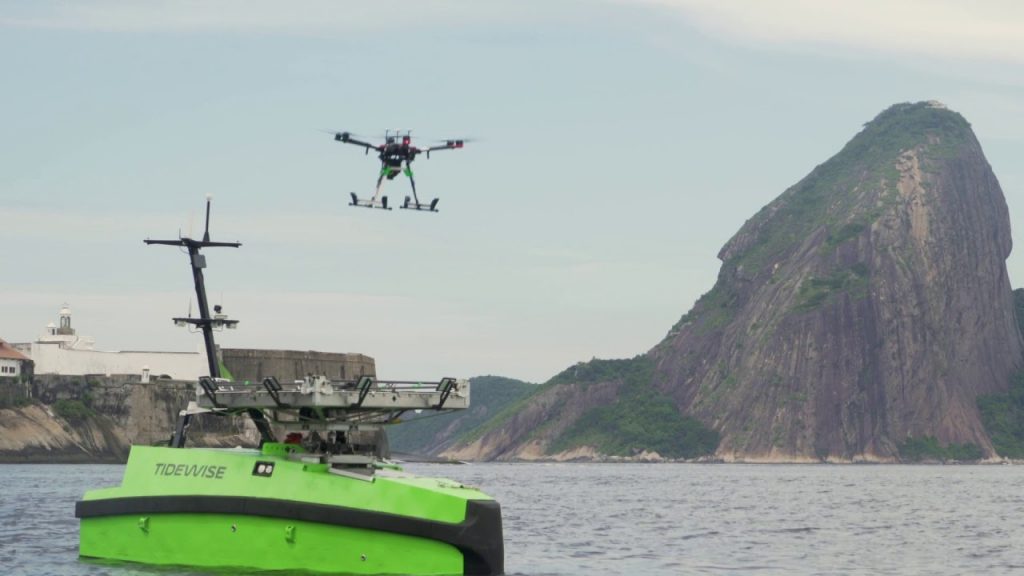
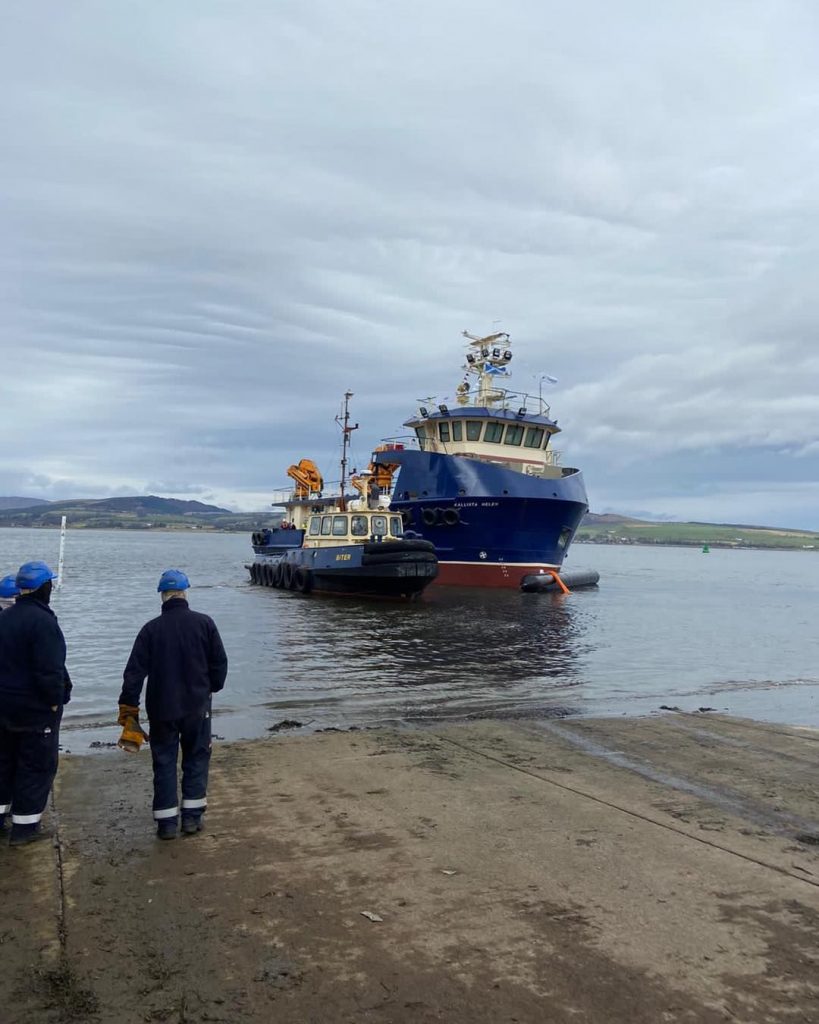
Fish Welfare Aquaculture Project.
A new aquaculture vessel with a focus on fish welfare has been launched on Monday (15/3) by Ferguson Marine. The 26-metre boat is the latest addition to the Inverlussa Marine Services fleet and the 6th vessel launched that has been built to plans by Macduff Ship Design.
The £6M Kallista Helen is a multi-purpose service vessel that is to be fitted with a £2.5M next-generation Thermolicer. This will enable the salmon producer to intervene earlier with regards to sea lice control, helping safeguard farmed fish health.
Ben Wilson, Managing Director of Inverlussa, said the Kallista Helen, named after his niece, was built with fish health and welfare front of mind.
‘From the outset, Scottish Sea Farms was looking to minimise fish handling and maximise fish welfare, designing the boat around those. The result is so much better when you start with the fish then consider the boat, rather than the other way round.’
Central to the vessel’s bespoke design is the Thermolicer itself, designed and engineered by ScaleAQ in Norway in partnership with ScaleAQ UK.
Volta Electric Passenger Ferry
The Passenger Express 46V is an IACS-approved, electric passenger ferry, ideal for any inland waterway service operating within a high population, urban environment. Featuring a striking design with capacity for between 400 and 450 passengers, the catamaran is part of a new series by Austal – the world’s largest aluminium shipbuilder.
An environmentally friendly, zero emission* electric high-speed ferry that delivers a superior passenger experience, greater efficiency and lower operating costs.
The Passenger Express 46V is an IACS-approved, electric passenger ferry, ideal for any inland waterway service operating within a high population, urban environment.
Distinctive, double automatic sliding doors provide direct access to the passenger deck for quick loading and unloading of passengers; ensuring turnaround times ‘alongside’ never exceed your fast battery charging requirements.
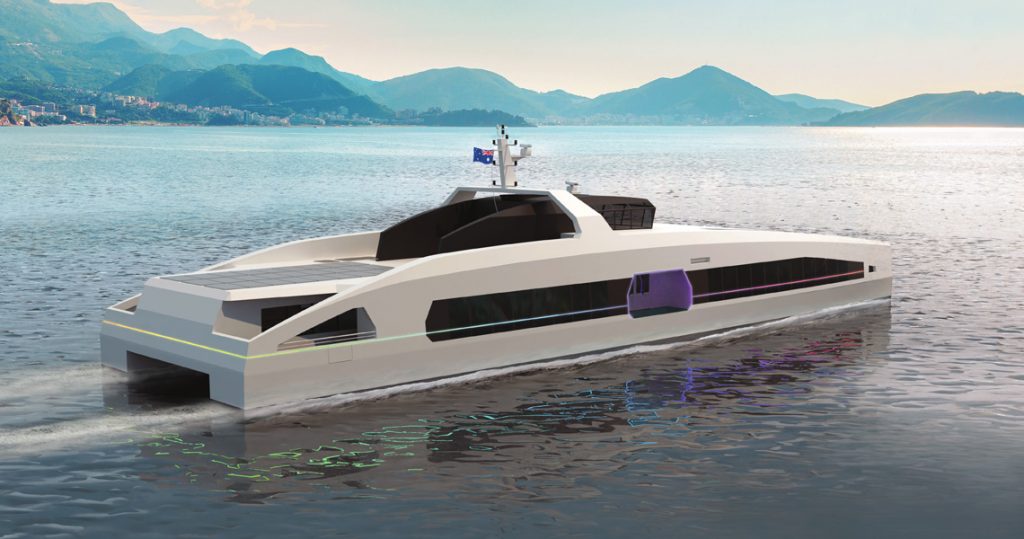
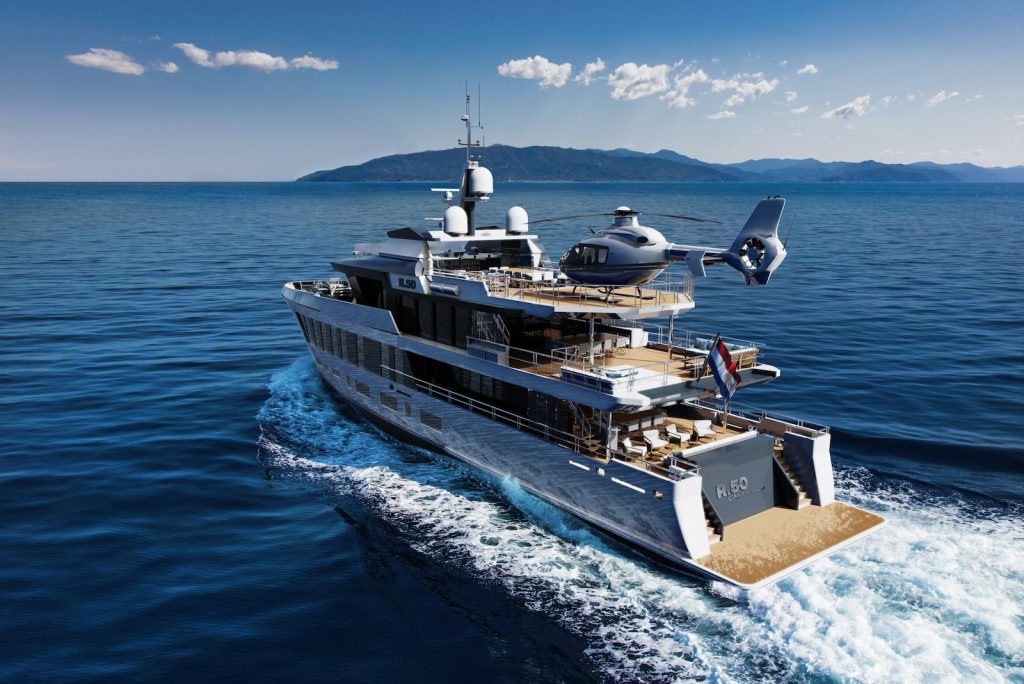
50th anniversary Design
Designed to commemorate the 50th anniversary of Diana Yacht Design, R.50 is a design that combines the passion and expertise of half a century in business. The result is a superyacht that has it all. Modern, sporty and with a hint of explorer, R.50 delivers luxury, performance, elegant lines and plenty of space for family and friends without compromise. Open and spacious decks are key exterior features, allowing for al fresco dining on every deck as well as a fully-equipped sports shop and an array of tenders and toys. Standing out from the crowd with a two-tone colour scheme of Chevy white and gunmetal grey, R.50 is not your average yacht.
The 19-metre Maia is equipped with proven Lamor oil recovery technologies.
From the beautiful blue Danube to the dynamic Black Sea, Romania has some of the world’s most precious marine environments. They are serious about keeping their marine ecosystems clean and recently took delivery of a new anti-pollution vessel with Lamor’s oil recovery technologies.
Maia is an oil recovery vessel built by Baltic Workboats in Estonia for the Romanian Search and Rescue Society. With a draught of 0.9 metres it is able to operate in shallow coastal waters. The vessel includes an advanced hull shape to cut through waves and improve efficiency, as well as a state-of-the-art oil recovery system from Lamor.
The Lamor in-built Oil Recovery System LORS is a skimming system based on Lamor’s proven technology. It provides the highest possible performance and safety for oil spill recovery operations, turning the entire vessel into an oil slick processing system.
